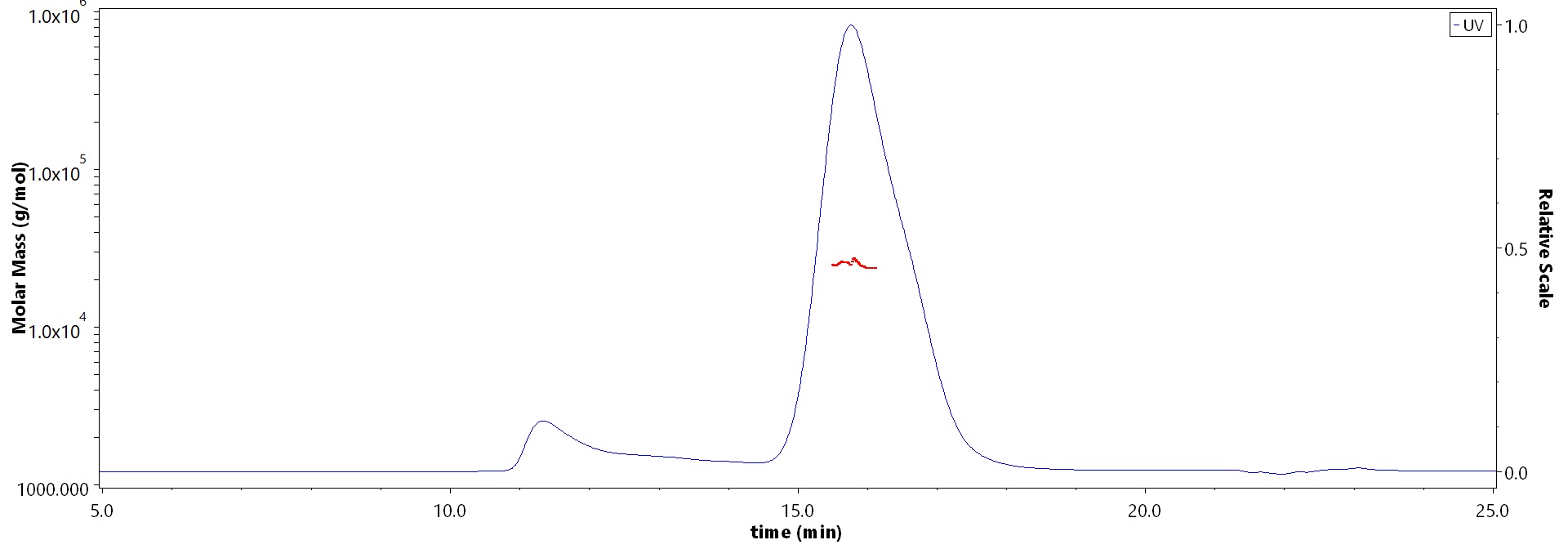分子别名(Synonym)
PGQTL2
表达区间及表达系统(Source)
Biotinylated Human GIPR Protein, His,Avitag (GIR-H82E3) is expressed from human 293 cells (HEK293). It contains AA Gly 26 - Gln 138 (Accession # P48546-1).
Predicted N-terminus: Gly 26
Request for sequence
蛋白结构(Molecular Characterization)

This protein carries a polyhistidine tag at the C-terminus, followed by an Avi tag (Avitag™).
The protein has a calculated MW of 16.6 kDa. The protein migrates as 21-31 kDa when calibrated against Star Ribbon Pre-stained Protein Marker under reducing (R) condition (SDS-PAGE) due to glycosylation.
标记(Labeling)
Biotinylation of this product is performed using Avitag™ technology. Briefly, the single lysine residue in the Avitag is enzymatically labeled with biotin.
蛋白标记度(Protein Ratio)
Passed as determined by the HABA assay / binding ELISA.
内毒素(Endotoxin)
Less than 1.0 EU per μg by the LAL method.
纯度(Purity)
>90% as determined by SDS-PAGE.
制剂(Formulation)
Lyophilized from 0.22 μm filtered solution in PBS, pH7.4 with trehalose as protectant.
Contact us for customized product form or formulation.
重构方法(Reconstitution)
Please see Certificate of Analysis for specific instructions.
For best performance, we strongly recommend you to follow the reconstitution protocol provided in the CoA.
存储(Storage)
For long term storage, the product should be stored at lyophilized state at -20°C or lower.
Please avoid repeated freeze-thaw cycles.
This product is stable after storage at:
- -20°C to -70°C for 12 months in lyophilized state;
- -70°C for 3 months under sterile conditions after reconstitution.
电泳(SDS-PAGE)

Biotinylated Human GIPR Protein, His,Avitag on SDS-PAGE under reducing (R) condition. The gel was stained with Coomassie Blue. The purity of the protein is greater than 90% (With Star Ribbon Pre-stained Protein Marker).
SEC-MALS

The purity of Biotinylated Human GIPR Protein, His,Avitag (Cat. No. GIR-H82E3) is more than 85% and the molecular weight of this protein is around 20-30 kDa verified by SEC-MALS.
Report
背景(Background)
This gene encodes a G-protein coupled receptor for gastric inhibitory polypeptide (GIP), which was originally identified as an activity in gut extracts that inhibited gastric acid secretion and gastrin release, but subsequently was demonstrated to stimulate insulin release in the presence of elevated glucose. Mice lacking this gene exhibit higher blood glucose levels with impaired initial insulin response after oral glucose load. Defect in this gene thus may contribute to the pathogenesis of diabetes. [provided by RefSeq, Oct 2011]























































 膜杰作
膜杰作 Star Staining
Star Staining











